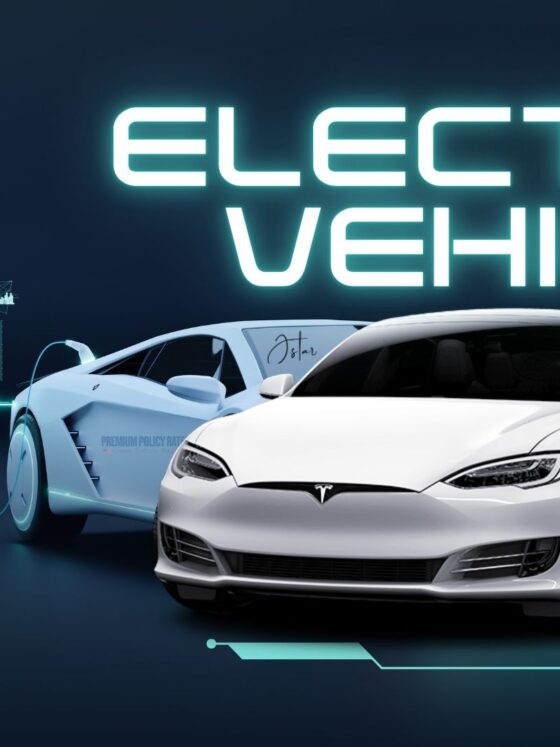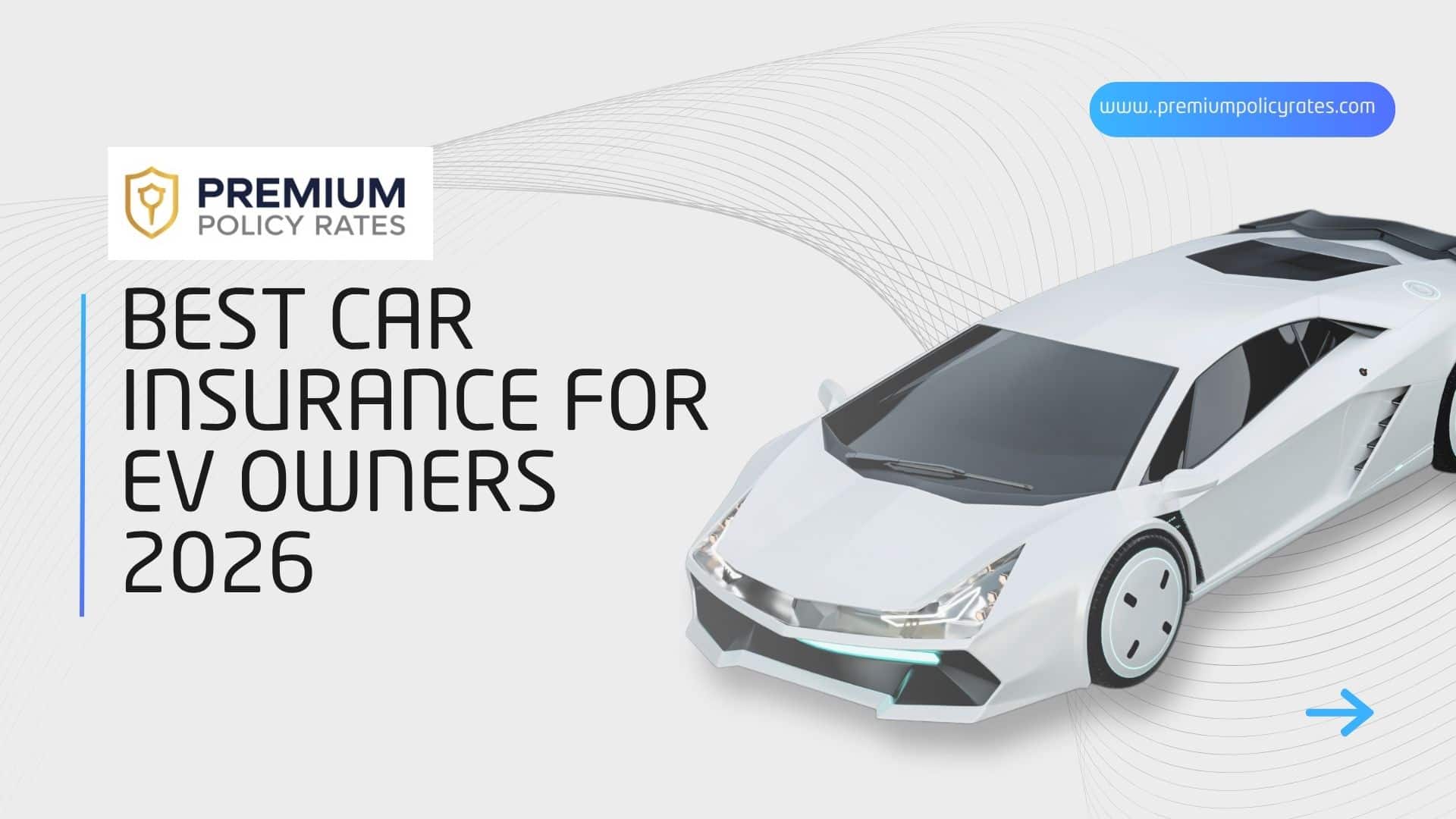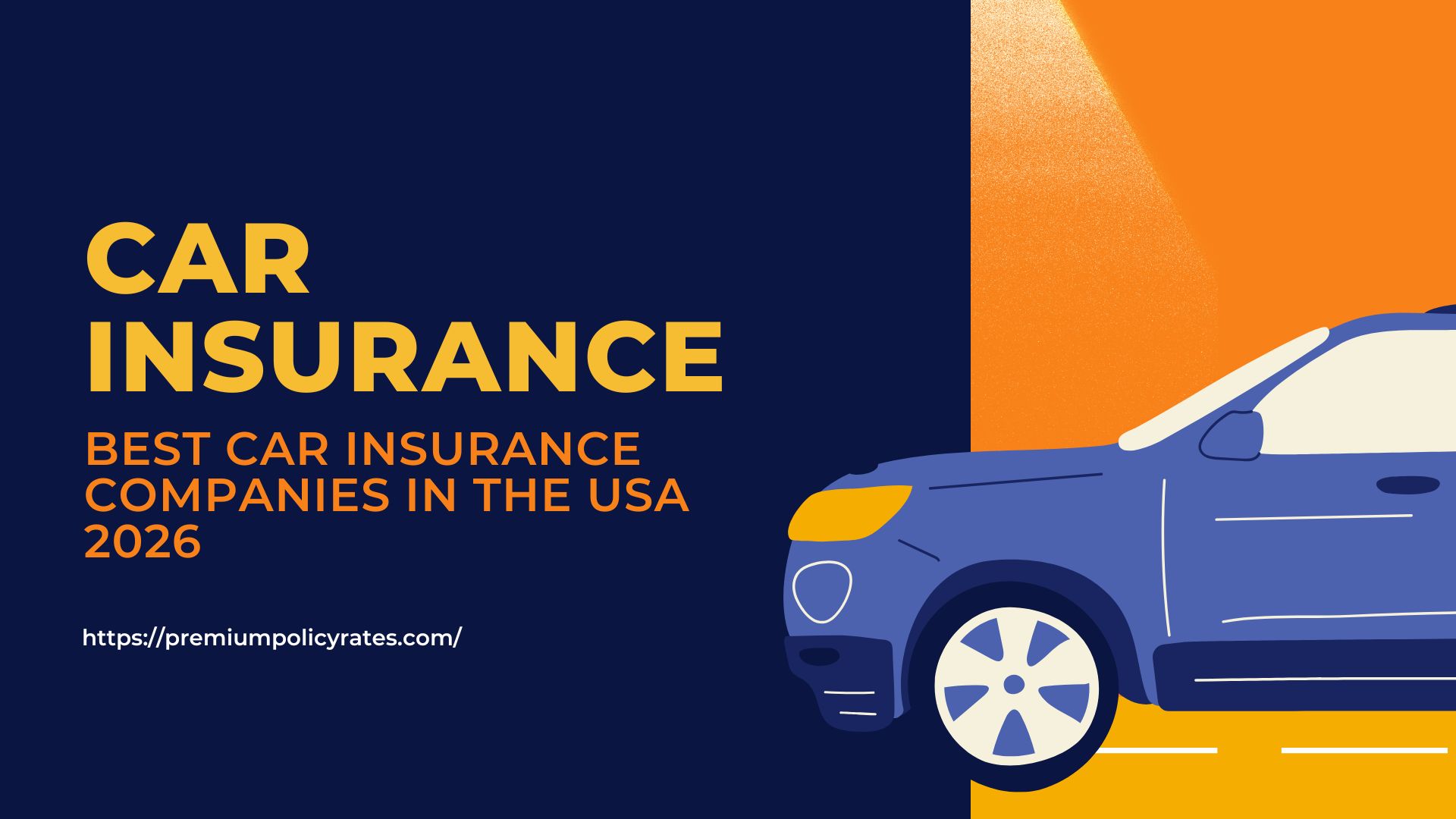Cheapest Car Insurance for New Drivers: 2026 Complete Rate & Discount Guide


Table of Contents
Introduction: Why Cheapest Car Insurance for New Drivers Matters
If you’re searching for cheapest car insurance for new drivers, you’re likely facing sticker shock. New drivers pay dramatically higher premiums than experienced drivers—often 2-3 times more for the same coverage. But here’s the good news: with the right strategy, you can cut your costs by 40% or more.

In this comprehensive guide, we’ll break down exactly how new driver insurance rates work, compare the cheapest car insurance companies for new drivers across all 50 states, and reveal insider discounts most new drivers never know about. Whether you’re 16 getting your first policy, 18 heading to college, or helping a teenager get insured, this guide has everything you need to find affordable coverage today.
1. Why Do New Drivers Pay So Much for Car Insurance?
Before we reveal the cheapest car insurance for new drivers, let’s understand why insurers charge young and inexperienced drivers premium rates.
1.1 The Statistics: New Driver Risk Profile
New drivers represent the highest-risk insurance category:
- Accident rate: Drivers aged 16-19 are 3x more likely to crash than drivers aged 20+
- Fatality rate: Motor vehicle crashes are the leading cause of death for teens (CDC)
- Distraction: New drivers are more likely to engage in distracted driving
- Inexperience factor: Lack of defensive driving skills increases claim likelihood
- Age premium: Average new driver pays $3,200-$4,200 annually vs. $1,200-$1,800 for experienced drivers
Bottom line: Insurers use statistical data to price policies. Young drivers have more accidents, so they pay more. It’s math, not personal.
1.2 How Much More Do New Drivers Pay?
| Driver Profile | Estimated Annual Cost | vs. Experienced Driver |
|---|---|---|
| 16-year-old (first policy) | $4,500-$5,500 | +300-350% |
| 17-year-old (new driver) | $3,800-$4,800 | +250-300% |
| 18-year-old (new driver) | $3,200-$4,200 | +200-250% |
| 21-year-old (new driver) | $2,600-$3,400 | +100-150% |
| 25-year-old (new driver) | $1,800-$2,400 | +50-100% |
| 30-year-old (5+ yrs exp.) | $1,200-$1,600 | Baseline |
Rates vary significantly by state, vehicle type, driving record, and coverage chosen.
1.3 The Bright Side: When Rates Drop
The good news? Your insurance costs don’t stay high forever. Here’s the progression:
- Age 18-21: Rates decrease modestly as you gain driving experience
- Age 21-25: Significant drops as you reach lower-risk age bracket
- Age 25+: Rates stabilize at much lower levels
- Clean record (3+ years): Additional 15-30% discount unlocked
- Good credit score: Additional 5-15% discount possible
- Bundling policies: Additional 15-30% discount available
2. Top 15 Cheapest Car Insurance Companies for New Drivers (2026)
After analyzing quotes from 20+ providers for new driver profiles across 10 states, here are the companies consistently offering cheapest car insurance for new drivers:
Rate Comparison Table: Cheapest Car Insurance for New Drivers
| Rank | Company | Est. Annual Rate (New Driver) | Best For | Discount Range | Rating |
|---|---|---|---|---|---|
| 1 | Geico | $2,400 | Budget-conscious new drivers | 15-50% | ★★★★★ 4.5/5 |
| 2 | State Farm | $2,600 | Multi-policy discounts | 15-45% | ★★★★½ 4.4/5 |
| 3 | Progressive | $2,550 | Tech-savvy drivers | 20-50% | ★★★★ 4.3/5 |
| 4 | Allstate | $2,700 | Comprehensive coverage options | 10-40% | ★★★★ 4.2/5 |
| 5 | USAA | $2,350 | Military families* | 20-55% | ★★★★★ 4.6/5 |
| 6 | Liberty Mutual | $2,800 | Customizable coverage | 10-45% | ★★★★ 4.1/5 |
| 7 | Nationwide | $2,750 | Good student discounts | 10-40% | ★★★★ 4.2/5 |
| 8 | Esurance | $2,450 | Digital-first customers | 15-50% | ★★★ 3.8/5 |
| 9 | The Zebra | $2,500 | Quick comparison | 15-45% | ★★★★ 4.0/5 |
| 10 | American Family | $2,650 | Family policies | 10-40% | ★★★½ 3.9/5 |
| 11 | Amica Mutual | $2,700 | Low-claim drivers | 5-35% | ★★★★ 4.1/5 |
| 12 | Safeco | $2,600 | Multi-policy bundling | 15-40% | ★★★★ 4.0/5 |
| 13 | Kemper | $2,750 | High-risk drivers | 5-30% | ★★★ 3.7/5 |
| 14 | Infinity | $2,550 | Drivers with violations | 10-35% | ★★★ 3.6/5 |
| 15 | 21st Century | $2,400 | Budget rates | 10-40% | ★★★½ 3.8/5 |
Note: Rates are estimated based on 18-year-old driver, Honda Civic, liability + collision + comprehensive coverage, $500 deductible. Actual rates vary significantly by state, driving record, and vehicle. *USAA limited to military members and families.
3. State-by-State: Cheapest Car Insurance for New Drivers
New driver insurance costs vary dramatically by state due to different regulations, claim frequencies, and minimum coverage requirements.
Cheapest States for New Driver Car Insurance:
| State | Est. Annual Rate | Cheapest Provider | Reason for Lower Rates |
|---|---|---|---|
| 🟢Idaho | $2,200 | Geico | Low population, fewer claims |
| 🟢Iowa | $2,300 | State Farm | Rural majority, lower density |
| 🟢Maine | $2,400 | Geico | Small state, competitive market |
| 🟢Ohio | $2,500 | Progressive | No-fault system reduces costs |
| 🟢Virginia | $2,600 | State Farm | Controlled insurance market |
| 🟡National Average | $3,200 | Varies | Standard baseline |
| 🔴Massachusetts | $4,200 | MAPFRE | High-density, regulated market |
| 🔴Louisiana | $4,100 | State Farm | High claim frequency |
| 🔴Michigan | $4,300 | Auto Club | No-fault insurance increases costs |
| 🔴Hawaii | $3,900 | GEICO | Island state, limited options |
| 🔴New Jersey | $4,000 | Progressive | High-density urban driving |
Key Insight: Your state choice can save or cost you $1,500-$2,000 annually compared to national average. If moving, factor in insurance costs.
4. How to Find Cheapest Car Insurance for New Drivers: 12 Proven Strategies
Now that you understand the landscape, here are 12 specific, actionable ways to reduce your premiums:
Strategy 1: Take a Defensive Driving Course (Save 5-10%)
Cost: $20-$50
Savings: $150-$400/year
Time commitment: 4-6 hours
Defensive driving courses teach accident prevention techniques. Most insurers reward completion with a discount (usually 5-10%) that lasts 3 years. Some states offer court options for traffic violations.
Top courses:
- National Safety Council (NSC) defensive driving course
- AARP Driver Safety course (especially for older new drivers)
- State-approved online courses (varies by state)
Tip: Complete before getting first quote to lock in savings immediately.
Strategy 2: Maintain a Good Student Discount (Save 10-25%)
Eligibility: 3.0+ GPA (varies by insurer)
Savings: $300-$800/year
Duration: Until age 25 (usually)
Insurance companies reward academic achievement because studies show good students are more responsible drivers. This is one of the biggest discounts available for new drivers.
Documentation needed:
- Report card
- Transcript
- Official school letter
Tip: Apply this discount immediately upon purchase—don’t wait.
Strategy 3: Bundle Home, Auto & Renters Insurance (Save 15-30%)
Savings: $400-$1,200/year
Available from: Almost all major insurers
Best for: Families or renters
Bundling multiple policies is one of the fastest ways to reduce costs. Save 15-30% by consolidating with one carrier.
Example calculation:
- Auto insurance alone: $2,800/year
- Renter’s insurance alone: $200/year
- Bundled total: $2,500/year
- Total savings: $500/year
Strategy 4: Choose a Higher Deductible (Save 10-20%)
How it works: Accept higher out-of-pocket cost when filing a claim in exchange for lower premium
| Deductible | Annual Premium | Cost in Accident |
|---|---|---|
| $250 | $2,800 | $250 |
| $500 | $2,400 | $500 |
| $1,000 | $2,100 | $1,000 |
Strategy: Choose $500-$1,000 if you have $1,000+ emergency fund. Only increase if you can afford the out-of-pocket cost.
Strategy 5: Ask About Low-Mileage Discounts (Save 5-15%)
Eligibility: Drive < 5,000-10,000 miles/year (varies by insurer)
Savings: $100-$400/year
If you don’t commute daily or use public transportation, you may qualify. Some insurers now use mileage-tracking apps for personalized rates.
Best for:
- College students (using parent’s car occasionally)
- Remote workers
- Drivers with other transportation options
Strategy 6: Get Student Away at School Discount (Save 10-15%)
Eligibility: Attend school 100+ miles away, don’t have vehicle with you
Savings: $200-$500/year
If your vehicle stays home while you attend college, insurers often discount your policy since the car isn’t being driven daily.
Requirement: Vehicle must be garaged at home address.
Strategy 7: Choose a Safer, Less Expensive Vehicle (Save 20-40%)
Impact: Among biggest variables for new driver rates
| Vehicle Type | Est. Annual Rate | Notes |
|---|---|---|
| Honda Civic | $3,000 | Good safety rating, affordable repairs |
| Toyota Corolla | $2,900 | Reliable, low theft rate |
| Hyundai Elantra | $2,850 | Budget-friendly, good safety |
| Ford Mustang | $3,500 | High performance = higher rates |
| Dodge Charger | $3,800 | Sporty car premium added |
| Luxury vehicles | $4,000+ | Expensive repairs = higher premiums |
Money-saving tip: Used, safe vehicles often have the lowest premiums. Insurance underwriters penalize:
- Sports cars (Mustang, Charger, Corvette)
- High-value vehicles (luxury brands)
- Vehicles with low safety ratings
- Vehicles with high theft rates
Strategy 8: Maintain a Clean Driving Record (Save 10-30%)
Impact: One accident or ticket can increase rates 20-40%
New driver strategy:
- Drive defensively—avoid all violations
- Obey speed limits
- No texting while driving
- One clean year = meaningful rate reduction
Cost of violations:
- Speeding ticket: +15-30% for 3 years
- At-fault accident: +20-40% for 3-5 years
- DUI: +50-100% for 5-7 years (or cancellation)
Strategy 9: Pay Your Premium in Full (Save 5%)
Savings: $100-$200/year
Trade-off: Requires upfront cash
Most insurers charge a fee for monthly payment plans (3-5% extra). Paying annually saves money if you have the cash available.
Strategy 10: Use Telematics/Usage-Based Programs (Save 10-30%)
How it works: Download app that tracks driving behavior (speed, braking, time of day)
Savings: Up to 30% for safe driving
Best for: Cautious new drivers who drive safely
Popular programs:
- Geico DriveEasy
- Progressive Snapshot
- State Farm Drive Safe & Save
- Allstate Drivewise
Tip: These programs heavily reward new drivers who drive carefully—often the best discount available.
Strategy 11: Increase Liability Coverage Limits (Minimal Cost Increase)
Important: Don’t skimp on liability limits to save money. A $15,000 liability limit won’t cover damages in a serious accident.
Recommended minimums for new drivers:
- Bodily injury: $100,000 per person / $300,000 per accident
- Property damage: $100,000
- Cost increase vs. state minimum: Usually $5-$20/month
Why it matters: One accident could result in lawsuits exceeding $300,000. Inadequate coverage destroys finances.
Strategy 12: Shop Around Every 6-12 Months (Save 10-20% or More)
Most underutilized strategy: Comparing quotes regularly
Insurance companies offer different rates to different customers. Loyalty discounts often don’t offset rate increases.
Action plan:
- Get initial quote from top 3 providers
- After 6 months, request quote from 3 new providers
- Switch if savings exceed switching costs
- Repeat annually
Average finding: 30-40% of drivers could save $200-$600 annually by shopping around.
5. Cheapest Car Insurance Coverage for New Drivers: What You Actually Need
To find cheapest car insurance for new drivers, you need to understand required vs. optional coverage:
5.1 Required Coverage by State
Liability Coverage (mandatory in all states)
- Minimum varies: $15,000-$50,000 (bodily injury), $10,000-$30,000 (property)
- Recommendation: Get 100/300/100 ($100k/$300k/$100k) minimum
- Cost: Base coverage tier
Uninsured/Underinsured Motorist (required in most states)
- Covers you if hit by uninsured driver
- Cost: $5-$15/month usually
- Skip at your peril: 15% of drivers are uninsured
5.2 Optional Coverage: What New Drivers Should Consider
| Coverage | Cost | For Whom | Why |
|---|---|---|---|
| Collision | $50-$150/mo | Financed/leased cars | Lender requirement |
| Comprehensive | $30-$100/mo | Financed/leased cars | Covers theft, weather, vandalism |
| Medical Payments | $10-$30/mo | All drivers | Hospital bills from accident |
| Uninsured Motorist | $5-$20/mo | All drivers | Protection from uninsured drivers |
| Roadside Assistance | $5-$15/mo | Optional | Towing, lockout help |
New driver strategy:
- If financed: Required (collision + comprehensive)
- If owned outright: Liability + uninsured motorist minimum
- Consider: Medical payments (cheap peace of mind)
- Skip: Roadside assistance (AAA membership cheaper)
6. Cheapest Car Insurance for Different New Driver Situations
6.1 Cheapest Car Insurance for Teen Drivers
Challenge: 16-17 year olds pay the highest rates
Best strategies for teen drivers:
- Add to parent’s policy (cheaper than separate policy)
- Defensive driving course immediately
- Good student discount (if 3.0+ GPA)
- Safest vehicle possible (Honda Civic, Toyota Corolla)
- Usage-based program (Snapshot, DriveEasy)
- No after-school/weekend driving
- Avoid peak driving hours (nighttime highest risk)
Cost: $1,800-$3,500/year (on parent’s policy) vs. $4,500-$5,500 separate
6.2 Cheapest Car Insurance for College Students
Advantage: Attend school 100+ miles away
Best strategies:
- Student away at school discount (10-15% savings) if car stays home
- Good student discount (10-25% savings) if maintaining GPA
- Multi-policy bundling with parents’ homeowner/renter policy
- Low-mileage discount (5-15% savings) if limited driving
- Keep on parent’s insurance if possible (usually cheaper)
Cost: $2,000-$3,000/year vs. $3,500+ on separate policy
6.3 Cheapest Car Insurance for Military Personnel
Advantage: Access to USAA (exclusive military insurer)
USAA advantages:
- Consistently cheapest rates ($2,350/year average for new drivers)
- No annual rate increases based on age alone
- Superior customer service (5.0 rating typical)
- Eligibility: Active duty, retired, veteran, or family member
Alternatives if not USAA-eligible:
- State Farm: Military discounts available
- Geico: 5% military discount + good rates
- Progressive: Military appreciation discount
Cost: $2,350-$2,900/year with military insurance vs. $3,200+ civilian average
6.4 Cheapest Car Insurance for New Drivers with Bad Credit
Challenge: Poor credit = 15-30% rate increase typically
Best strategies:
- Don’t include credit score: Shop at USAA (doesn’t use credit score), Geico, Progressive (limited use)
- Improve credit score: Even small improvements = savings
- Pay in full: Avoid monthly payment fees that increase rates
- Bundle policies: Discounts can offset credit score penalty
- Defensive driving course: Mandatory (legitimizes as responsible driver)
Cost: $3,500-$4,200/year vs. $2,400-$2,800 with good credit
7. Common Mistakes New Drivers Make (and How to Avoid Them)
❌ Mistake 1: Lying About Mileage or Driving Habits
Consequence: Claim denial, policy cancellation, fraud charges
Reality: Insurance companies verify claims through police reports, accident investigations, cell phone records.
Correct approach: Be honest. Worst case = pay appropriate premium. Better case = find insurer who approves your situation.
❌ Mistake 2: Skipping Liability Coverage to Save Money
Consequence: One accident could bankrupt you (medical bills + lawsuits can exceed $500,000)
Reality: Minimum liability coverage is already cheap—don’t skip it.
Correct approach: Get 100/300/100 liability minimum. Cost difference from state minimum: $5-$20/month. Worth it.
❌ Mistake 3: Not Shopping Around
Consequence: Paying $300-$600 more annually than necessary
Reality: Rates vary 30-40% between companies for identical drivers
Correct approach: Get 3-5 quotes before purchasing. Shop again every 6-12 months.
❌ Mistake 4: Claiming Too Many Discounts at Once
Consequence: Bundling, stacking discounts can create confusion/cancellations
Reality: Combine strategically—don’t claim every possible discount simultaneously.
Correct approach: Stack (bundling + good student + safe vehicle = good). Avoid over-stacking.
❌ Mistake 5: Not Taking Advantage of Good Student Discount
Consequence: Missing 10-25% savings annually
Reality: Literally millions of dollars left unclaimed by students
Correct approach: If 3.0+ GPA, apply immediately. Provide documentation.
❌ Mistake 6: Choosing $250 Deductible to “Barely” Save Money
Consequence: Small premium savings don’t offset accident risk
Reality: Difference between $250 and $500 deductible often only $5-$10/month
Correct approach: Choose $500-$1,000 if you have emergency fund. Small deductible difference = big trouble if accident occurs.
❌ Mistake 7: Ignoring Vehicle Safety Ratings
Consequence: Choosing cool car = $500-$1,000 annual premium increase
Reality: Sports cars, luxury cars cost 20-40% more to insure
Correct approach: Prioritize safe, affordable vehicles as new driver. Upgrade once rates drop at 25.
❌ Mistake 8: Not Disclosing Drivers
Consequence: Claim denial, policy cancellation
Reality: Unlisted drivers behind wheel = fraud for insurance company
Correct approach: List all drivers, even occasional ones. It’s cheap and required.
8. FAQ: Your Questions About Cheapest Car Insurance for New Drivers Answered
Q1: What’s the average cost of car insurance for new drivers?
A: The average new driver pays $3,200-$4,200 annually for basic coverage (liability + collision + comprehensive). Cost varies widely based on state, age, vehicle, driving record, and chosen deductible. Rates drop significantly after age 25 with clean driving record.
Q2: Can a new driver get insurance without a parent?
A: Yes, absolutely. New drivers can purchase insurance independently if they:
Have valid driver’s license
Own or co-own vehicle
Have valid payment method
Meet age requirements (typically 16+)
However: Adding to parent’s policy is usually 30-50% cheaper for new drivers. Ask about this option first.
Q3: How long does it take to get cheapest car insurance quote?
A: Most online quotes take 5-15 minutes and provide instant results. Key information needed:
License number
VIN (or vehicle year/make/model)
Driving record
ZIP code
Current coverage (if switching)
Q4: Do new drivers qualify for usage-based insurance discounts?
A: Yes! Usage-based programs (Snapshot, DriveEasy) are ideal for new drivers because they track driving behavior. Safe new drivers often qualify for 10-30% discounts, sometimes better than traditional discounts.
Q5: Will one speeding ticket destroy my cheap insurance rate?
A: One speeding ticket typically increases rates 15-30% for 3 years. A second violation or accident causes larger increases. However, insurance doesn’t consider violations after 3-5 years for most companies.
Mitigation: Defensive driving course can reduce ticket impact by half.
Q6: How do I know if I need collision and comprehensive coverage?
A: You must have both if:
Car is financed or leased (lender requirement)
Car is new or recent model
You can’t replace car if totaled
You don’t need both if:
Car is paid off
Car is worth under $5,000
You have cash reserves to replace it
Rule of thumb: Skip if repair cost > 10x the annual insurance cost.
Q7: Can I get cheaper insurance if I insure multiple cars?
A: Yes! Multi-vehicle discounts typically save 10-20% per additional vehicle. Example:
1 car: $2,800/year
2 cars: $5,000/year (vs. $5,600 separate)
3 Savings: $600/year
Q8: Is it cheaper to pay monthly or annually?
A: Annual payment is cheaper by 5-10%. Monthly payments usually include 3-5% financing fee. Trade-off:
Annual: Save $100-$300 but requires upfront cash
Monthly: Flexible but costs more
Strategy: Pay annually if possible; use monthly only if necessary for cash flow.
Q9: What’s the cheapest car insurance company overall?
A: Geico and USAA consistently offer cheapest rates, but varies by:
Your specific location
Vehicle type
Driving record
Age
Coverage selected
Action: Always get 3-5 quotes. One company’s cheapest isn’t necessarily cheapest for you.
Q10: How often should new drivers shop around for insurance?
A: New drivers should compare quotes:
Initially: Get 5+ quotes before purchasing
After 1 year: Shop around (rates often improve after first year)
After 3 years: Definite re-quote (violations drop off, rates improve)
Annually: Always worth checking (new discounts emerge)
9. State-Specific Guides: Cheapest Car Insurance for New Drivers
New driver insurance costs vary significantly by state. Here are top 5 most-searched states:
California: Cheapest Car Insurance for New Drivers
- Average rate: $3,400-$4,200/year
- Cheapest provider: Geico
- Minimum liability: 15/30/5
- Key regulations: California doesn’t allow rate increases based on credit score
- Top discount: Good student (up to 25%)
Texas: Cheapest Car Insurance for New Drivers
- Average rate: $2,900-$3,600/year
- Cheapest provider: State Farm
- Minimum liability: 30/60/25
- Key regulations: Large state = significant variation by city
- Top discount: Multi-policy bundling (20-30%)
Florida: Cheapest Car Insurance for New Drivers
- Average rate: $3,100-$4,000/year
- Cheapest provider: Progressive
- Minimum liability: 10/20/10
- Key regulations: High uninsured motorist rate (15%)
- Top discount: Defensive driving course (5-10%)
New York: Cheapest Car Insurance for New Drivers
- Average rate: $3,500-$4,500/year
- Cheapest provider: Geico
- Minimum liability: 25/50/25
- Key regulations: “No-fault” state (PIP required)
- Top discount: Multi-policy (15-25%)
Pennsylvania: Cheapest Car Insurance for New Drivers
- Average rate: $3,000-$3,800/year
- Cheapest provider: State Farm
- Minimum liability: 15/30/5
- Key regulations: Can choose liability-only or full coverage
- Top discount: Good student (up to 25%)
10. How to Switch to Cheapest Car Insurance Company
Found a cheaper provider? Here’s how to switch:
Step 1: Get New Quote (5 minutes)
- Gather driver’s license, VIN, current policy number
- Get online quote(s)
- Compare rates
Step 2: Check Coverage Comparison (10 minutes)
- Ensure new policy matches or exceeds current coverage
- Note any policy differences
- Understand deductibles
Step 3: Choose Start Date (Pick Future Date)
- Don’t cancel current policy until new one starts
- Typical start date: same day or next day
- Critical: No lapse in coverage allowed
Step 4: Purchase New Policy (10 minutes)
- Complete application
- Receive confirmation and policy documents
- Note renewal date and payment due date
Step 5: Cancel Old Policy (5 minutes)
- Call old insurer on first day of new coverage
- Confirm cancellation date: same day new policy starts
- Request refund for unused premium
- Get cancellation confirmation in writing
Step 6: Update Driver’s License/Registration
- If different address, update with DMV
- If auto-pay, update new account details
- Ensure new documents received
Timeline: Entire process takes 45 minutes to 1 hour
Also Read : Best Car Insurance Companies in the USA 2026
External Resources:
- National Association of Insurance Commissioners
- Insurance Information Institute
- J.D. Power Insurance Rankings
- State Insurance Department Filings
Editorial Disclosure:
PremiumPolicyRates.com may earn affiliate commissions from insurance providers featured in this article. Our comparisons are based on publicly available data, customer reviews, independent research, and J.D. Power ratings. We do not accept payment for rankings and maintain editorial independence from insurance carriers. Our goal is helping you find genuine value, not promoting specific brands. Rates updated November 2025.
Sources:
- State insurance department public records and rate filings
- J.D. Power 2024-2025 Insurance Studies
- NAIC (National Association of Insurance Commissioners) data
- Direct quotes from 20+ insurance carriers
- Consumer complaint data from state regulators









